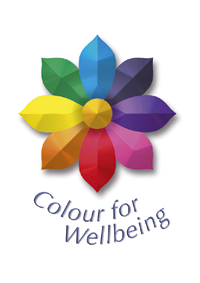
Since I was a child, I have been obsessed with colour, more specifically, the psychological application of colour in a therapeutic context. In the playground while friends were handing out brightly coloured sweets, I would be more interested in why some sweets were preferred over others – perhaps unusual for a 6 year old! Some liked the reds and blacks, others the greens, some the yellows, and dislike for certain colours was noticeable. I was wondering even then, did this mean something? If so, what, and how could this knowledge be used?
As I grew older I noticed the colours worn by different teenage groups, and the use of colour to define style, tribe, and a myriad of other unspoken aspects of communication. I noticed the colour of the homes and environments I visited, I noticed what this felt like, how the personality and the décor colours combined to create a whole, or a mismatch. I noticed colours that were not harmonious, and environments that were unsettling due to use of colour.
Colour Therapy for Your Health
As a teenager, I began exploration of alternative ideas of healthcare, using colour to diagnose and treat poor health, physically, emotionally or spiritually. This fascinated me as a concept, it was so simple, but a very powerful idea. ‘Colour therapy’ has historically been used throughout time and across cultures to assist people to feel better, by using coloured oils, crystals, clothing, light, foods or breathing for example. Preference for, and dislike of, different colours have been linked with particular health or well-being issues.
I began to utilize my ideas, experimenting on myself and willing friends. Some years later I completed my training as an occupational therapist, establishing clinical skills in a range of healthcare settings in the UK. Some colleagues were interested in my ideas about colour and so, where appropriate, we incorporated them successfully into interventions. However, there isn’t a nationally recognized or regulated organization governing the use of colour for therapy or well-being, and as a health professional, it is important that my recommendations are evidence based, wherever possible.
Using Colour Theory to Validate Colour Therapy
I had over 20 years of anecdotal evidence, but very little hard evidence that the applied use of colour could facilitate well-being. Luckily, times are changing as colour in healthcare is coming slowly but surely back into vogue; some countries have adopted the ‘eat colour’ approach, to remind us to eat a range of freshly coloured fruit and vegetables. Much work has been done in dementia care in the UK and elsewhere with using colour to enhance well-being, but we are still a long way off from using colour to full advantage for well-being.
This is where it is important to use a notation system such as Munsell, which allows us to communicate colour to others in an accurate and efficient way. I like The New Munsell Student Color Set (2011) because it explains and shows the Munsell system and provides exercises – very useful for those of us who like to learn by doing and at a time that suits themselves. Some of my recent work includes development and a peer reviewed publication of a colour well-being lesson plan for use with adults in UK adult education environments. Additionally, I was pleased to Chair and present the Colour and Well-being session at the prestigious 12th International AIC2013 Colour Congress. Sadly I missed the presentation of the Judd Award which was presented to Roy S. Berns, Professor in Color Science, Appearance, and Technology, and Director of the Munsell Color Science Lab at Rochester Institute of Technology. I am very excited that the 2017 AIC congress in Jeju, Korea, is themed ‘Colour and Health’ and am hopeful that the understanding of colour interacting with well-being will blossom.
 About the Author
About the Author
Vanessa Volpe consults with individuals and groups who present with a wide range of requirements, and provides assessment and recommendations to improve many aspects of personal and professional development. This means clients receive a personal occupational analysis in areas of life they want to improve and knowledge about how to use colour to make the improvements. This could be a one off session and include signposting to another service, or it could be a longer-term commitment to reach specific goals. She has seen people create new careers, increase self-confidence with family and colleagues, become more creative and more. Not only does colour for well-being make you feel good, its fun too! You can reach her at: www.colourforwellbeing.com



Leave a Reply